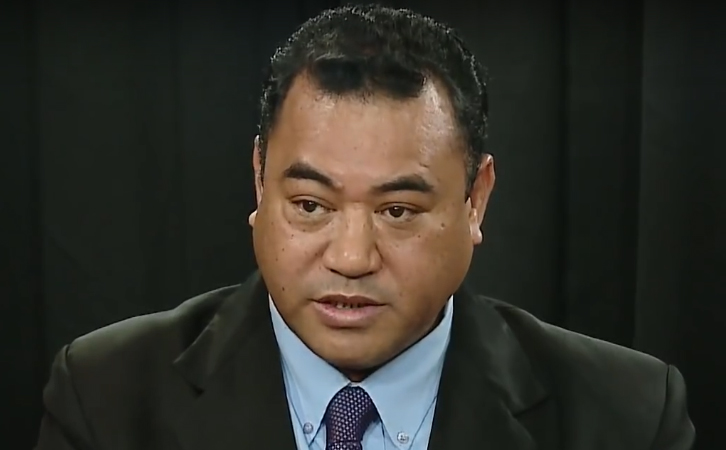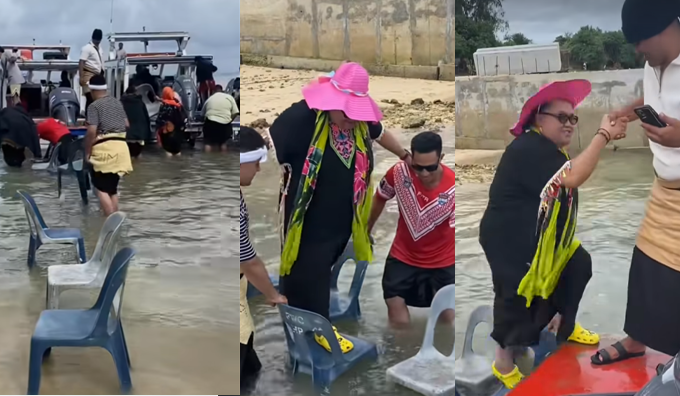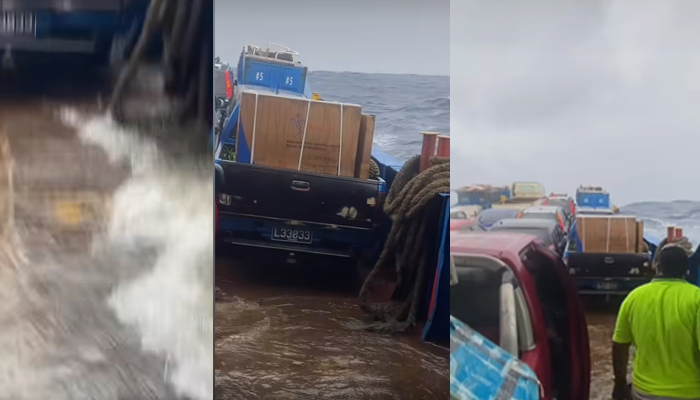Tonga’s Minister of Customs, Mateni Tapueluelu, has acknowledged the growing frustration among Tongans in New Zealand, Australia and the US over undelivered shipments and auctioned cargoes—but says his hands are tied due to jurisdictional limits.

The Minister’s remarks came after photos and videos surfaced online last week showing shipments belonging to Tongan diaspora families, auctioned at Queen Sālote Wharf over unpaid fees.
Many shipment owners claimed that NZ, the US, and Australia freight forwarders misled them. They had paid thousands for freight and clearance, only to discover the fees were never fully settled when their shipments arrived in Nuku’alofa.
These complaints mirror issues Kaniva News has frequently reported throughout its 20-year history. In some past cases, our investigations and exposés forced identified agents and companies to reimburse affected customers.
Minister Tapueluelu clarified that Customs does not hold the disputed cargoes; rather, shipping companies retain them due to unpaid freight charges.
“We wish to make clear at the outset that the cargoes in question are not held by Customs,” the Minister said.
Unpaid Freight Consequences
He said the cargo is held by shipping companies because, in many cases, “the freight forwarder business in New Zealand, the US or Australia has not paid the shipping company the freight for the export of the cargo to Tonga.”
He said that “in many cases, the freight forwarders would only pay for costs in the foreign country to book the space on the vessel, as well as handling fees to load and export the containers.’
When the cargo arrives in Tonga and the owners approach the Tongan agents to get the release documents from the shipping company, the cargo owners discover from the shipping agents that the freight has not been paid in full or at all, according to the Minister.
When the importer cannot pay the freight, the shipping companies or agents will not release the cargo.
Mr Tapueluelu said the shipping companies or agents “are able to do this because they have a lien over the goods under their shipping contract”.
“Until the freight is paid, the cargo will remain in storage at the international wharf and this would mean that storage fees also accumulate for the goods.
Avoid Storage Fees
“The longer it takes to settle the freight, the more the storage accumulates. Freight charges and storage fees are not Customs fees and are required to be settled before the Customs processing begins.”
When shipments arrive in Tonga Tapueluelu said “it is the responsibility of local shipping companies/agents and licensed warehouse operators” to inform their customers, the owner or notifying party listed on the shipping documents for the goods.
He said Customs deals directly with Tongan warehouse operators licensed under Customs law to store such goods.
The Ministry requires these operators to ensure timely clearance of goods by contacting their customers to arrange for clearance. Additionally, they must maintain proper records of all goods stored in their warehouses, the Minister said.
Under Customs law, the timeframe for clearance of imported goods is six weeks. If they are not cleared within six weeks, they are overdue for clearance, and Customs may dispose of the goods by auction.
“Despite this timeframe, Customs gives every opportunity to importers to clear their goods by following up with warehouse operators to conduct stock takes and reminding them to contact importers”, the Minister told Kaniva News.
‘We do not hold auctions every 6 weeks. Instead, we defer the timing of the actual auctions to give importers and warehouse operators more opportunity to clear the cargo and have it released to the owner.
“On average, we would arrange auctions twice a year if the goods are long overdue for clearance and, (1) the goods are beginning to deteriorate; OR (2) there is lack of storage space in the warehouses that keep them and the old cargo need to be cleared to make space for new cargo; OR (3) the goods have been abandoned by their owners.”
The news finds many in the Tongan diaspora feel helpless, caught between overseas forwarders and local shipping agents.
Some affected customers told Kaniva News this appeared to be a long-standing scam used by certain agents to defraud vulnerable customers, taking advantage of cultural reluctance to pursue legal action or demand refunds.
Editor’s Note: For years, Tongan diaspora communities have endured this unresolved problem. While New Zealand has laws—such as Commerce Commission oversight of shipping companies—authorities seem oblivious to how these exploitative practices devastate our people financially.
Some affected customers contacted us following last week’s auction. We have chosen to withhold their identities—as well as the names of the shipping agents involved—while we conduct further investigations.
Additionally, we are escalating this matter with New Zealand authorities to determine whether a permanent resolution can be achieved.





